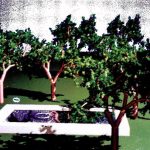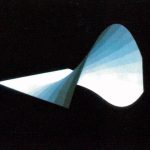James (Jim) T. Kajiya

Most Recent Affiliation(s):
- Microsoft Research, Microsoft Corporation, Distinguished Engineer
Other / Past Affiliation(s):
- California Institute of Technology
- California Institute of Technology
Location:
- Redmond, Washington, United States of America
Bio:
SIGGRAPH 1991
James T. Kajiya received his Ph.D. Degree in Computer Science from the University of Utah in 1979. His thesis research, by applying Lie group representation theory to the modeling of the Human Visual System as a signal processing system, was able to explain a wide range of phenomena in monochrome brightness perception as well as predict several new visual illusions and phenomena. Since 1979, Dr. Kajiya has been at the California Institute of Technology, first as an assistant professor, then as associate professor of Computer Science. Dr. Kajiya has published on mathematical models for computer vision, very high level programming languages, and mathematical logic for computer science. His recent work has focused on very high quality computer graphics. This work has included nonlinear antialiasing algorithms for the display of text on raster screens, invention of several new techniques for ray tracing primitives such as swept volumes, parametric patches and fractal surfaces, an early paper on volume rendering, a hierarchical bounding box technique for accelerating ray tracing, the introduction of anisotropic light reflection models for surfaces, the introduction of algebraic geometry in patch computations, a new technique extending the ray tracing process via an integral equation/monte carlo algorithm called the “rendering equation”, and most recently, a solution to the problem of rendering fuzzy surfaces.
SIGGRAPH 1984
James T. Kajiya is an assistant professor in the Computer Science Department at the California Institute of Technology. He received his doctorate in computer science from the University of Utah and has been a project engineer at Evans & Sutherland Computer Corporation. His primary research interests center around ray tracing in computer graphics, very high-level programming languages and theoretical computer science.
Course Organizer:
Experience Category: Jury Member:
Award(s):
- SIGGRAPH 2011 Steven Anson Coons Award: Kajiya
- SIGGRAPH 1991 Computer Graphics Achievement Award: Kajiya
Learning Category: Presentation(s):
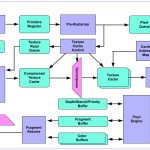
Type: [Technical Papers]
Talisman: commodity realtime 3D graphics for the PC Presenter(s): [Torborg] [Kajiya]
[SIGGRAPH 1996]

Type: [Technical Papers]
Generative modeling: a symbolic system for geometric modeling Presenter(s): [Snyder] [Kajiya]
[SIGGRAPH 1992]
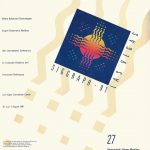
Type: [Courses]
Photorealistic Volume Modeling and Rendering Techniques Organizer(s): [Inakage]
Presenter(s): [Inakage] [Greene] [Kajiya] [Levoy] [Perlin] [Rushmeier]
Entry No.: [27]
[SIGGRAPH 1991]
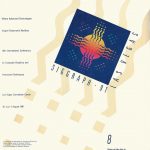
Type: [Courses]
State-of-the-Art in Volume Visualization Organizer(s): [Hanrahan]
Presenter(s): [Hanrahan] [Kajiya] [Kreuger] [Schröder] [Wilhelms]
Entry No.: [08]
[SIGGRAPH 1991]
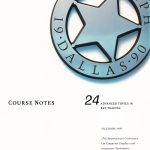
Type: [Courses]
Advanced Topics in Ray Tracing Organizer(s): [Glassner]
Presenter(s): [Glassner] [Arvo] [Hall] [Kajiya] [Mitchell] [Wallace]
Entry No.: [24]
[SIGGRAPH 1990]

Type: [Courses]
Math for SIGGRAPH Organizer(s): [Shoemake] [DeRose]
Presenter(s): [Shoemake] [DeRose] [Kajiya] [Platt]
Entry No.: [23]
[SIGGRAPH 1989]

Type: [Technical Papers]
Rendering fur with three dimensional textures Presenter(s): [Kajiya] [Kay]
[SIGGRAPH 1989]

Type: [Courses]
A Consumer's and Developer's Guide to Image Synthesis Organizer(s): [Cohen]
Presenter(s): [Cohen] [Haines] [Hall] [Kajiya] [Meyer]
Entry No.: [10]
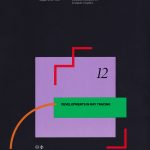
Type: [Courses]
Developments in Ray Tracing Organizer(s): [Barr]
Presenter(s): [Barr] [Arvo] [Inakage] [Kajiya] [Blinn] [Cook] [Whitted]
Entry No.: [12]
[SIGGRAPH 1986]
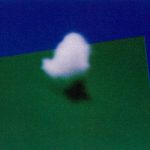
Type: [Technical Papers]
Ray tracing volume densities Presenter(s): [Kajiya] [Von Herzen]
[SIGGRAPH 1984]
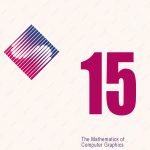
Type: [Courses]
The Mathematics of Computer Graphics Organizer(s): [Barr] [Kajiya]
Presenter(s): [Barr] [Barsky] [Blinn] [Duff] [Guibas] [Kajiya] [Mandelbrot]
Entry No.: [15]
[SIGGRAPH 1984]
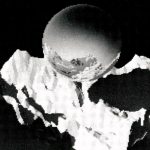
Type: [Technical Papers]
New techniques for ray tracing procedurally defined objects Presenter(s): [Kajiya]
[SIGGRAPH 1983]
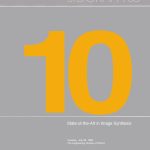
Type: [Courses]
State of the Art lmage Synthesis Seminar Organizer(s): [Stock]
Presenter(s): [Stock] [Barr] [Voss] [Kajiya]
Entry No.: [10]
[SIGGRAPH 1983]
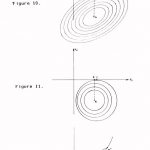
Type: [Technical Papers]
Filtering high quality text for display on raster scan devices Presenter(s): [Kajiya] [Ullner]
[SIGGRAPH 1981]

